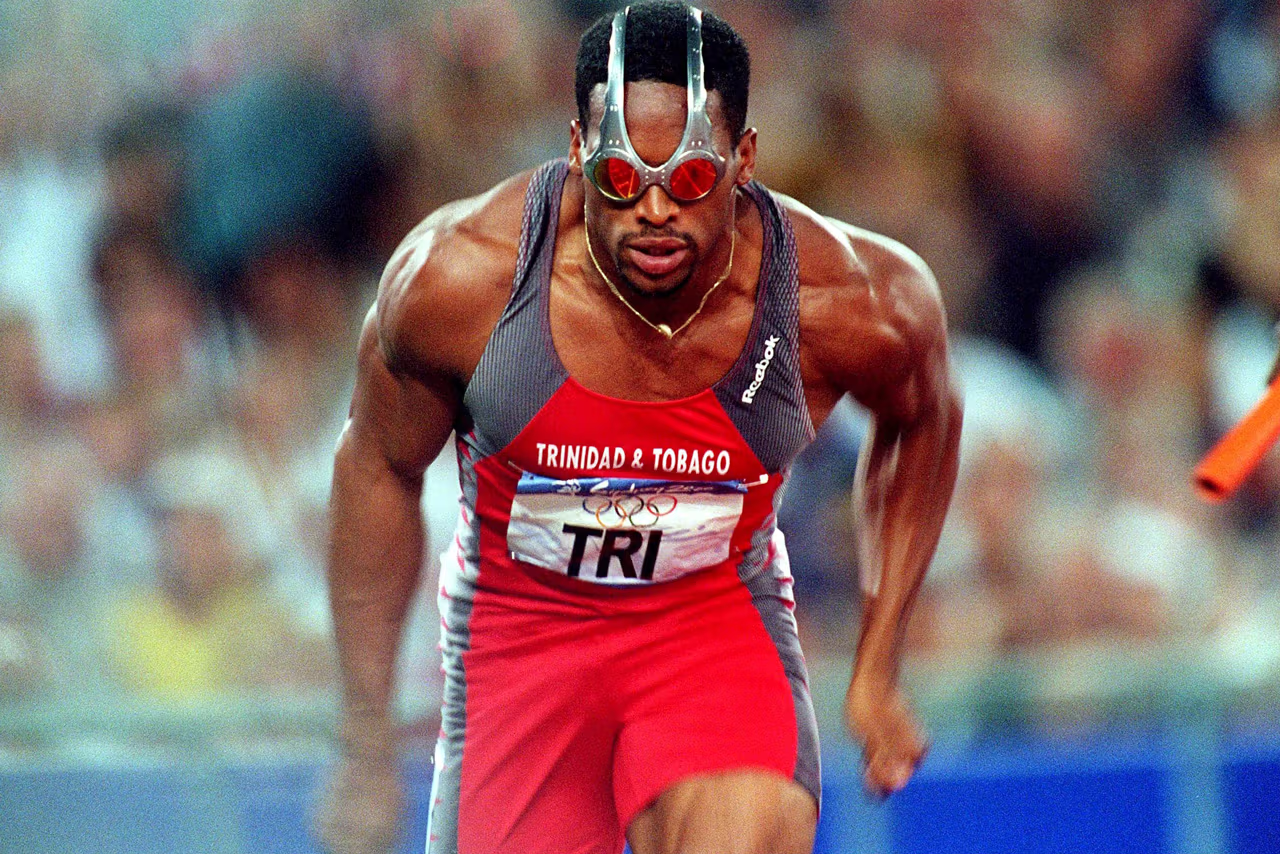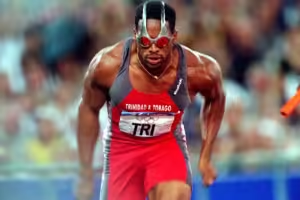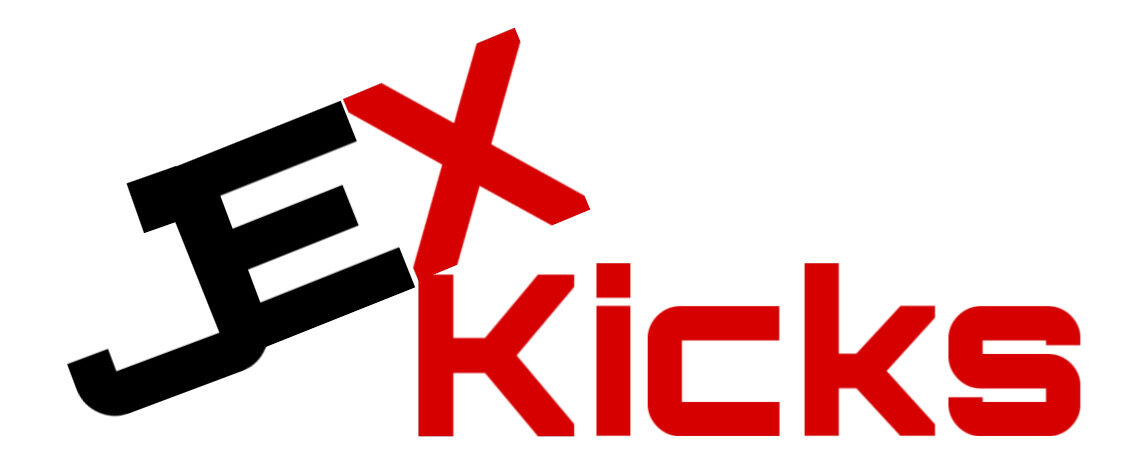

As the world kick off the 2024 Summer Olympics in Paris, an iconic photo from the 2000 Sydney games made its rounds on social media and fashion sites. It showed Trinidadian sprinter Ato Boldon in an unmissable pair of silver sunglasses with arms that wrap over his head instead of sitting atop his ears. The futuristic, conversation-starting eyewear, aptly named the OVERTHETOP, was an innovation of the California-based brand Oakley and has become a symbol of athletes’ functional expressions of style at the international games. While Boldon’s frames might be some of the most talked about in recent history, they are just one example of Oakley’s podium presence.
As the 2024 Olympics carry on, one might notice that Oakley appears in a multitude of the arenas spread across Paris and beyond. “We’re going to have about 2,000 to 5,000 athletes that will be wearing our products,” says Corey Hill, Vice President and Head of Global Sports Marketing at Oakley. “A lot of teams and athletes will be wearing our product because it helps them perform better.”
Beach volleyball players — both those who partner with Oakley and those who don’t — are outfitted in the eyewear to address the sun and sand. So, too, are those surfing in Tahiti, where athletes aren’t just wearing sunglasses, but also a new, state-of-the-art helmet designed for the notoriously stomach churning water sport where head protection hasn’t always been the norm. The brand appears on bikers, golfers and, of course, the track where Oakley has made its mark on the games beginning at the 1996 Atlanta games. It was then that the brand debuted the Pro M Frame on American track star Allen Johnson, who won the 100M Hurdles in the glasses, providing visual fodder for an Oakley campaign that highlighted the style’s unibody frame, high definition optics and impressive 117 patents, setting the stage for years to come. This year, the Sphaera is an on-track favorite.
While Oakley has mastered the art of innovation in sports, the task of creating eyewear for the Olympics is not as simple as pulling something off the shelf. “The IOC has very strict regulations on the size of the logo and branding in competition,” says Brian Takumi, Oakley Vice President of Creative and Soul. “How do we make something so disruptive that you won’t even need to see a logo on it?”
Over the years, said disruption has come through in both form and function, as evidenced by the Pro M and the OVERTHETOP. Building on these two hallmark moments for Oakley, the 2012 London Olympics saw the release of a patented switchlock technology called RadarLock, which was translated into limited glasses for the Great Britain team. In Rio in 2016, the brand’s signature Prizm technology made its Olympic debut. This lens innovation, which fine tunes vision based on one’s environment, is now ubiquitous in Oakley frames and caters to a bevy of sports.

Leave a Reply